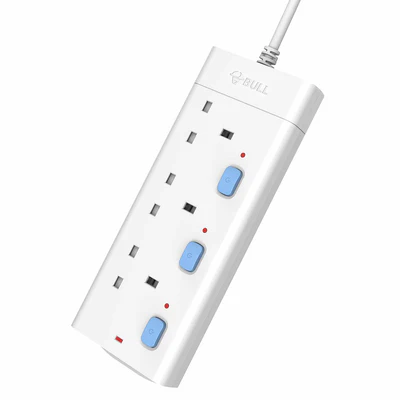Power strips are incredibly useful tools that allow you to plug multiple devices into a single outlet. They’re perfect for managing the many gadgets that modern homes and offices rely on — from laptops and phones to televisions and speakers. However, while power strips can be convenient, there’s one common practice that experts strongly advise against: plugging one power strip into another, also known as “daisy-chaining.”
This practice might seem harmless at first, especially when you’re trying to extend the reach of a power source or need additional outlets. But in reality, it poses serious safety risks that could lead to electrical fires, device damage, or even personal injury. In this article, we’ll explain why daisy-chaining power strips is a bad idea, how it can create unsafe conditions, and provide safer alternatives for handling your electrical needs.
The Dangers of Daisy-Chaining Power Strips
1. Overloading the Circuit
Every power strip has a maximum load capacity, which is typically listed in either amps or watts. This indicates how much electrical current the strip can safely handle. If you plug one power strip into another, you are essentially doubling the number of devices plugged into a single outlet, potentially exceeding the maximum capacity of the circuit.
When the circuit becomes overloaded, it can cause the power strips to overheat, which can damage both the power strips and the devices connected to them. In the worst-case scenario, this could lead to an electrical fire.
2. Risk of Overheating
Electrical components generate heat as they conduct current. Power strips are designed to handle a certain amount of power without getting too hot, but when daisy-chained, the heat generated by multiple devices can accumulate and overwhelm the power strip’s capacity to dissipate it. This results in overheating, which is one of the primary causes of electrical fires.
Overheating is especially dangerous if your power strips are made from low-quality materials or lack proper overload protection. Many cheaper models, particularly those without safety certifications, are more prone to melting or catching fire under excessive heat.
3. Potential Damage to Electronics
When you exceed the safe load capacity of a power strip by daisy-chaining, the voltage levels can fluctuate, causing an electrical surge. These surges can damage sensitive electronics like computers, televisions, and audio equipment. Not only does this compromise the safety of your devices, but it can also result in costly repairs or replacements.
4. Violation of Electrical Codes
In many areas, plugging one power strip into another violates electrical safety codes. These codes are put in place to protect people and property from electrical hazards. Most codes require that all electrical equipment, including power strips, be properly rated and installed according to specific guidelines. Daisy-chaining is not considered a safe installation practice and could result in fines or insurance complications if damage occurs.
Why Is Daisy-Chaining So Common?
Despite the clear dangers, daisy-chaining remains a common practice in many homes and offices, especially in environments where there’s a high demand for outlets. People may do this to avoid the hassle of running multiple extension cords or to increase the number of devices they can plug in.
However, this convenience comes at the cost of safety, and it’s crucial to understand that one power strip should be able to accommodate the number of devices you plan to use, provided the devices are within the power rating of the strip. If you need additional outlets or a longer reach, you can solve the problem with the right equipment, avoiding the need for daisy-chaining.
Safer Alternatives to Daisy-Chaining Power Strips
1. Use a Longer Power Strip or Surge Protector
Instead of plugging one power strip into another, consider using a longer power strip with more outlets or a surge protector that can accommodate all of your devices. Surge protectors offer an added layer of protection against voltage spikes, which can help preserve the life of your devices.
GONEO is an excellent example of a brand that offers high-quality surge-protected power strips with a variety of outlet configurations. Their power strips come with built-in surge protection, overload protection, and fire-resistant materials, ensuring that you can safely plug in multiple devices without worrying about risks like overheating or electrical damage.
2. Install Additional Outlets
In spaces with a high demand for power, consider installing additional outlets or having a licensed electrician add more sockets to the room. This eliminates the need for daisy-chaining power strips altogether, reducing the risk of overloads and creating a safer electrical setup.
3. Upgrade to Smart Power Strips
If you want more control over your devices, smart power strips offer an excellent alternative. These strips allow you to control the power to individual outlets via an app or remote control, making it easier to manage power usage without the need for multiple strips. Smart power strips are also often equipped with surge protection and overload prevention, giving you an added layer of safety.
Conclusion: Safety First
While it may seem convenient to plug one power strip into another, the risks involved make it a dangerous practice that should be avoided. By understanding the potential hazards, such as overloading circuits, overheating, and damaging electronics, you can make more informed decisions about your electrical setups.
Instead of daisy-chaining, invest in high-quality, properly rated power strips or surge protectors. Brands like GONEO offer products designed with safety in mind, ensuring your devices remain protected from power surges and overloads. By prioritizing safety and using the right equipment, you can enjoy the convenience of multiple outlets without compromising on protection.
